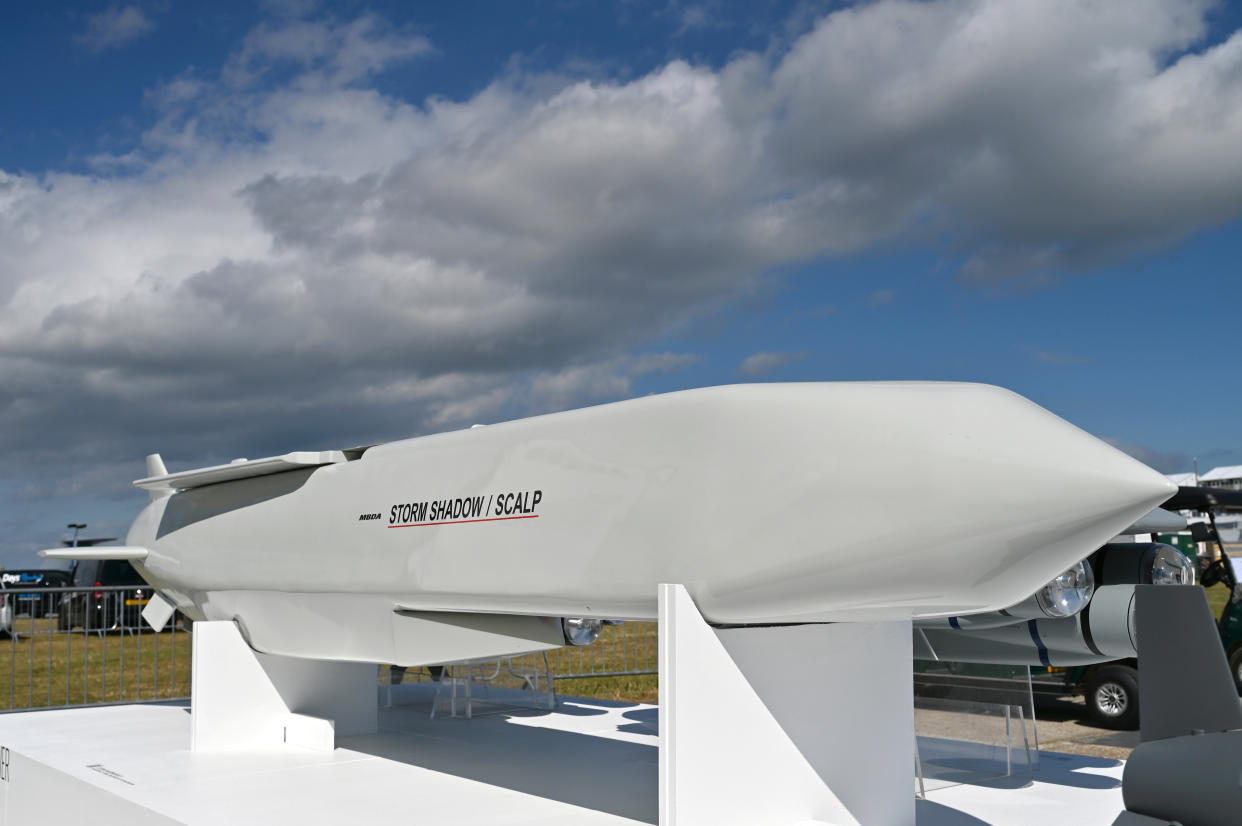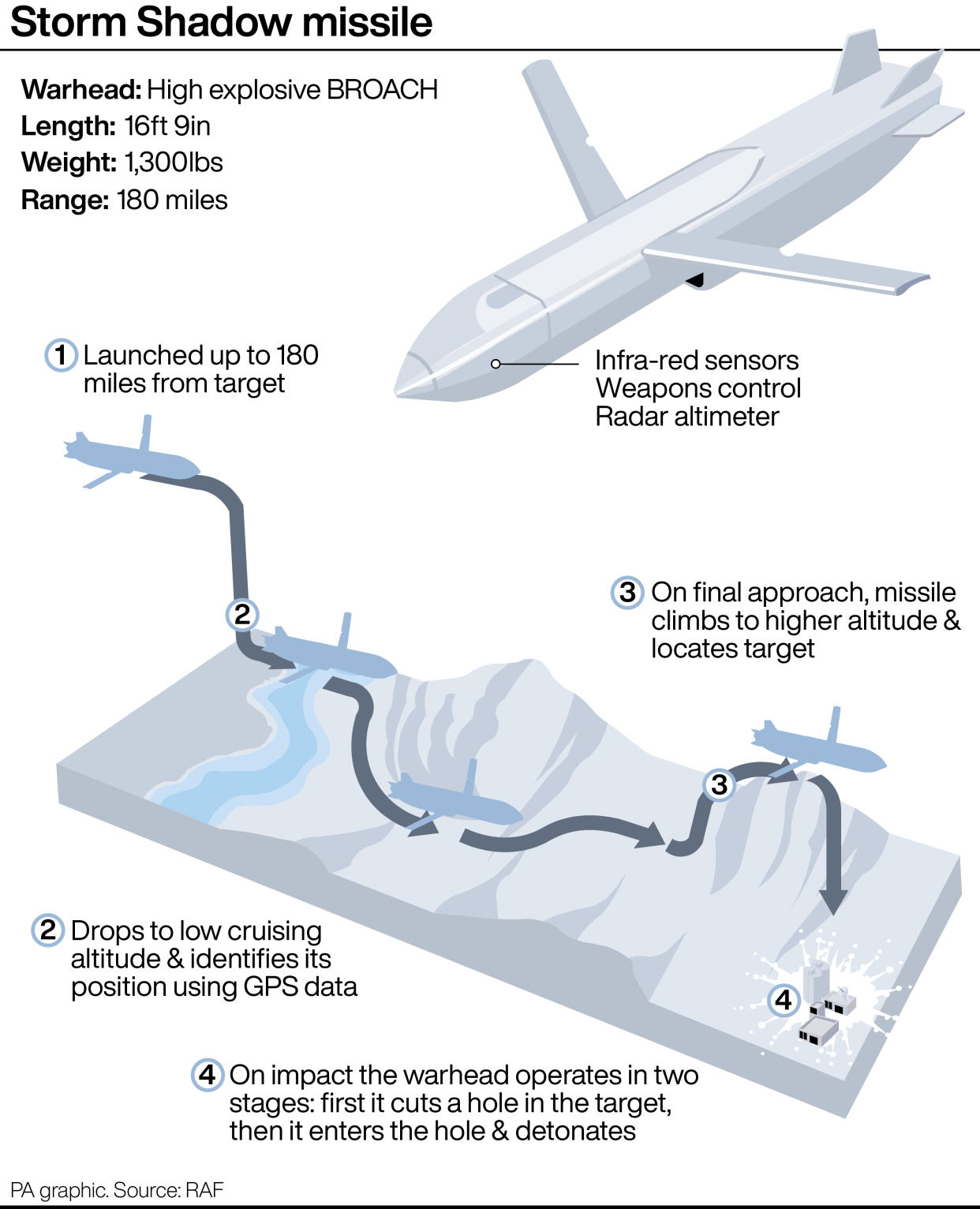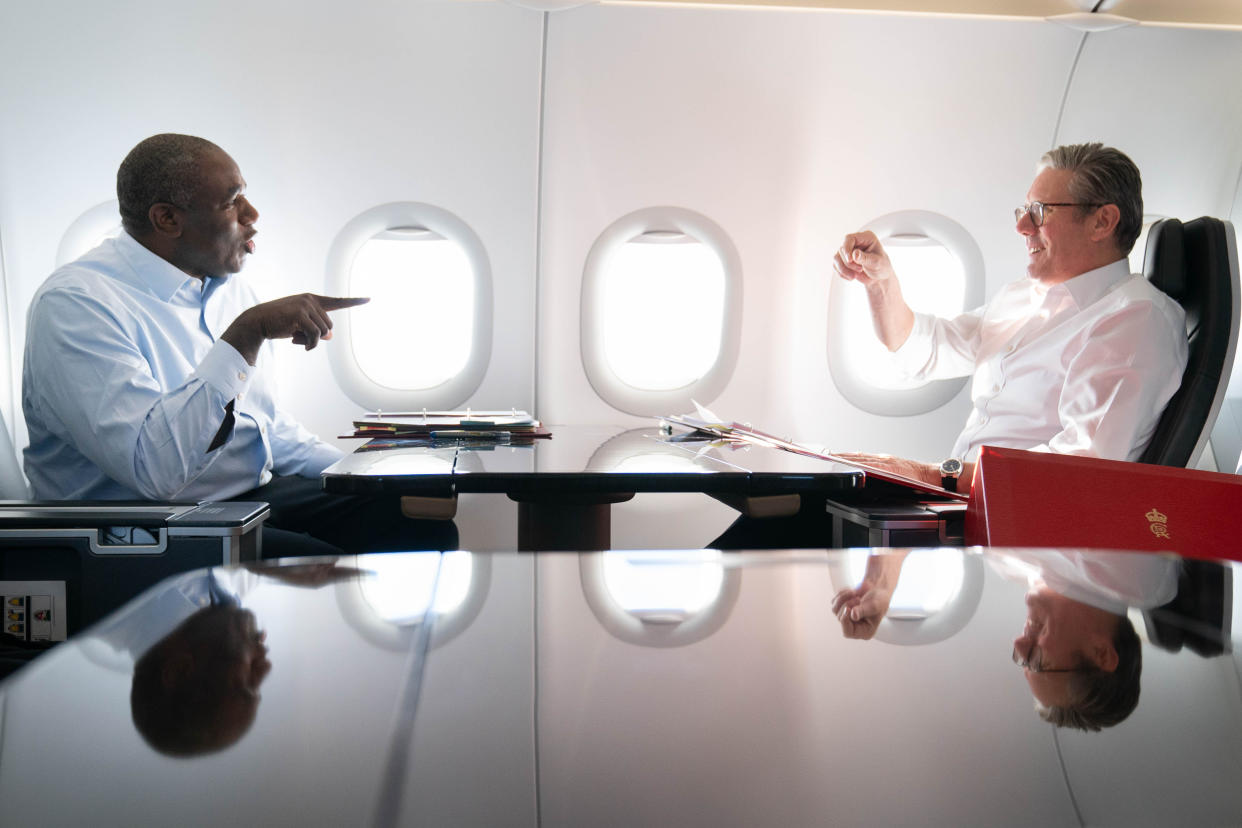What are Storm Shadow missiles and why does Ukraine want them?

Volodymyr Zelensky has urged western leaders to overcome “the fear of making strong, objectively necessary decisions” following another Russian bombing, as the debate continues over allowing Ukraine to use long-range weapons.
Sir Keir Starmer and US president Joe Biden have been discussing whether Ukraine can have permission to use long-range weapons to strike targets including airfields within Russia. It already holds Western-supplied weapons, but has so far been prevented from using them in Russian territory due to concerns about escalating the ongoing conflict.
In the aftermath of a Russian bombing in Kharkiv that the Ukrainian president said had left nearly 30 people injured, including children, he said: “The world must help us defend ourselves against Russian military aircraft and the dozens of guided aerial bombs that claim Ukrainian lives every day.
“This terror can be stopped. But to stop it, the fear of making strong, objectively necessary decisions must be overcome."
Foreign Secretary David Lammy said further talks are set to take place involving Starmer, Biden and the Ukrainian president at the UN General Assembly (UNGA) in New York later this month, adding that the UK will not be “bullied” by Putin’s threats of war with Nato.
The weapons under discussion include Storm Shadow missiles provided by the UK last year. Here, Yahoo News UK explains what they are and why Ukraine wants to use them.
What is a Storm Shadow missile?
The Storm Shadow cruise missile is fired from aircraft and has a range of more than 155 miles, according to the manufacturer.
Powered by a turbo-jet engine, the 1,300kg Storm Shadow travels at speeds of more than 600mph, is just over five metres long and has a wingspan of three metres.
After launch, the weapon, equipped with its own navigation system, descends to a low altitude to avoid detection before locking on to its target using an infra-red seeker.

On final approach, the missile climbs to a higher altitude to maximise its chances of hitting the target.
On impact, it penetrates the target before a delayed fuse detonates the main warhead.
Storm Shadow missiles have been used by British and French air forces in the Gulf, Iraq and Libya.
Why does Ukraine want them?
Ukraine actually already has a stock of Storm Shadow missiles - after the UK donated an unspecified number in May last year.
However, this was based on them being used defensively against targets within Ukrainian territory that were occupied by Vladimir Putin’s forces.
What Ukraine now wants to do is fire them - as well as US-supplied ATACMS - within Russian territory.
Sat next to Starmer in Downing Street in July, Ukrainian president Volodymyr Zelensky told the prime minister to “show your leadership” and help with Ukraine’s “long-range capability”.
Watch: Ukrainian president Zelensky attends cabinet meeting in July
He said that “if the restriction on Western weapons is lifted”, it would help Ukraine strengthen its defence and secure its frontline positions. Zelensky added “it is possible to destroy” areas in Russia where weapons are being concentrated.
But Matthew Savill, director of military sciences at the Royal United Services Institute (RUSI), a defence think tank, said the benefits for Ukraine could be greater politically than on the battlefield.
"There is political benefit to Ukraine if international backers remove these restrictions, because it could be seen as a test of their resolve, and a demonstration of their willingness to face down Russian rhetoric.
"The tactical benefit, actually on the battlefield, varies and is probably diminished to a degree by the warning. Storm Shadow is best used against heavily protected buildings like bunkers or reinforced ammunition storage sites and headquarters."
What has the UK said?
No decision has yet been made.
Foreign secretary David Lammy and US secretary of state Antony Blinken travelled to Kyiv in a joint show of support on Wednesday, and Sir Keir Starmer and Joe Biden have discussed whether Ukraine can have permission to use long-range weapons to strike targets including airfields within Russia.
On Sunday Lammy said further talks would take place at the UN General Assembly (UNGA) in New York later this month.
Asked whether the objections to making a decision were operational or political, he told Sky News’s Sunday Morning With Trevor Phillips programme: “This is a long-standing request of Zelensky. He’s now been making it for well over a year. I understand why he makes that and, of course, it’s important for us to discuss the detail of that with our closest allies, and we continue to do that.
“But we head to UNGA and the UN General Assembly, where both Biden and the Prime Minister will meet Zelensky and as we head into the G7 foreign ministers (meeting) and the G20.”

The main reason for hesitation is a concern that the provision of long-range weapons would leave to escalation of the conflict. Last week, Putin said allowing long-range strikes would mean Nato countries, the US and European countries are “at war with Russia”.
Russia itself has been accused of escalating the conflict, with the US saying it has taken new ballistic missiles from Iran for use in Ukraine.
Who makes the Storm Shadow missile?
Storm Shadow missiles are made by MBDA, which describes itself as the "only European group capable of designing and producing missiles and missile systems to meet the whole range of needs of the three armed forces [air, sea and land]".
A joint venture of the three aerospace and defence companies - Airbus, BAE Systems and Leonardo - it has 15,000 employees and posted revenue of £3.8bn last year.
How much is a Storm Shadow missile?
According to the BBC, each missile is about £767,000, with their high cost meaning they tend to be launched with a flurry of drones that are deployed to distract the enemy.
RUSI's Savill noted: "The Ukrainians continue to develop long-range - around 1,000km - drones... but these have to be launched in large numbers to get through, and tend to have small warheads. So while these Western-supplied missiles won’t ‘tip the scales’, they fill a gap in the current Ukrainian arsenal."


